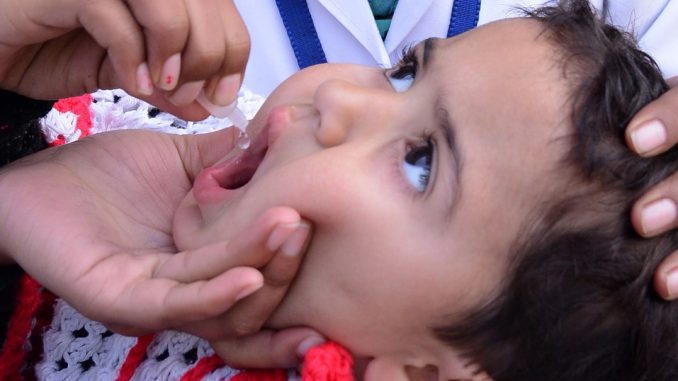
By Abantika Ghosh
2018 pneumonia and diarrhea progress report shows gender gap persists
Despite improvements in full immunisation coverage across India, girls under the age of five in rural and poorer urban localities continue to lose out on vaccinations, an annual report released by the Johns Hopkins Bloomberg School of Public Health has found.
“Across India, there is lower vaccine coverage among female children in rural areas and in poor, urban areas. Improvements to full immunization coverage in India have not succeeded in closing the gender gap in coverage, as only 78 females were fully immunized for every 100 males fully immunized in poorer areas of Delhi,” the report by International Vaccine Access Center (IVAC) at the Johns Hopkins Bloomberg School of Public Health said.
The 2018 Pneumonia and Diarrhea Progress Report that was released by the IVAC ahead of the 10th annual World Pneumonia Day — observed on November 12 — describes efforts to fight pneumonia and diarrhea in 15 countries with the greatest number of deaths from these illnesses. Besides India, the other countries are Nigeria, Pakistan, the Democratic Republic of Congo (DRC), Ethiopia, Chad, Angola, Somalia, Indonesia, Tanzania, China, Niger, Bangladesh, Uganda, and Côte d’Ivoire
Last year, the report had lauded India for its Mission Indradhanush programme that, it said, “actualises its vision towards equitable immunisation and demonstrates its commitment to the nation’s health”.
In India, the under-five child mortality for girls is 40 deaths per 1,000 live births, while for boys it is 39 deaths per 1,000 live births. A total of 2,60,990 children, under the age of five, died of pneumonia and diarrhoea in India in 2016 – the highest in the world.
According to experts, progress to stop infant mortality was being hampered by persistent inequities in countries around the world. “Addressing these inequities will demand greater levels of funding, strong political commitment, accountability supported by better data, and a coordinated global effort that prioritizes the most vulnerable”, Kate O’Brien, a professor with Bloomberg School’s Department of International Health and IVAC’s executive director, said.
The IVAC report also analyses how effectively countries are delivering or ensuring the use of 10 key interventions, including exclusive breastfeeding, vaccination, access to care and use of antibiotics, oral rehydration solution and zinc supplementation, to prevent and treat pneumonia and diarrhea. The measures are known to help protect children from death due to these illnesses and could help achieve the UN’s Sustainable Development Goal target of reducing under-five mortality to 25 per 1,000 live births by 2030.
The IVAC report does not reflect on the pneumonia vaccine introduced by India in 2017 under the universal immunisation programme. “India initiated a phased national introduction in May 2017, but no child had yet received the third dose, given at 9 months of age in 2017; thus, the estimated PCV3 coverage is zero per cent,” the report said.
Source: The Indian Express

Leave a Reply